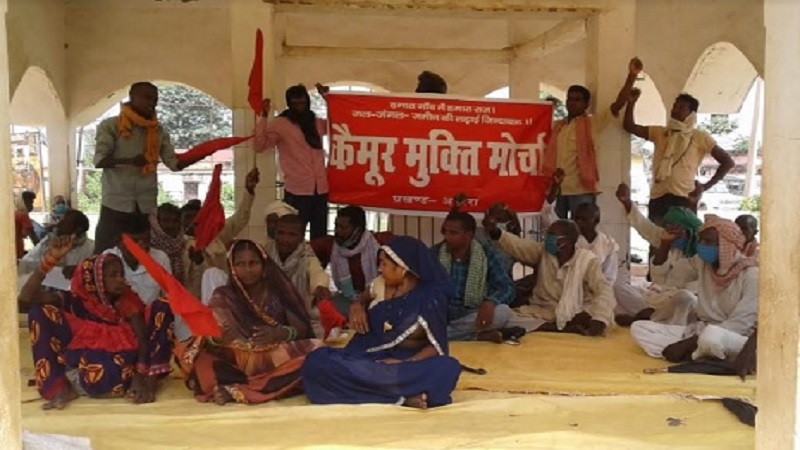
Forest-dwellers and adivasi communities in Kaimur plateau assert their decision to boycott Bihar election despite an appeal from Union Minister of State for Home Affairs Nityanand Rai at the seldom-visited Adhaura district.
Rai visited the tribes and assured them of a proper solution in their struggle for forest rights. In exchange, he asked the agitators to withdraw the decision to boycott the election.
Members suspected and rejoiced that the visit was a direct result of the letters to Ministers and the State Human Rights Commission that had gained international media’s attention thanks to the help of Citizens for Justice and Peace (CJP) and the All India Union of Forest Working People (AIUFWP) and their decision to snub state election.
Further, they said a similar political pressure influenced the release of the seven protesters – Kailash Singh from Rohtas district, Sipahisingh Kharwar and Ramsakal Kharwar from Goiyan village in Adhaura district, Hari Charan Singh from Karaila village, Pappu Paswan from Jharpa village, Lallan Singh and Dharmendra Singh from Baradih village – on October 15 despite facing serious charges under Section 307 and the Arms Act at a district sessions court.
They were detained following a two-day peaceful protest organised by the Kaimur Mukti Morcha in Adhaura on September 10 and September 11 to demand the enforcement of the Forest Rights Act 2006 and to denounce the proposal of the tiger reserve and wildlife sanctuary. Enraged by the authorities’ persisting silence, some people had tried to shut down the forest department’s office. This resulted in a scuffle with the police which then escalated to lathi-charge and gun-firing.
According to the protesters, “Following the scuffle, police began firing indiscriminately and ended up cutting off the ear of one of the protesters. If that gunshot was fired to their head, the person would have died! For this and such explosive incidents we hold the officials accountable who don’t even bother visiting this place. Today, they are blaming protesters for the violence that they themselves have incited.”
AIUFWP Deputy General Secretary Roma said that along with the demands for forest rights, the community should also question why a peaceful protest suddenly turned into a clash.
Tribal settlements like Kharwar, Gond, Urav and Karoba communities from the Vindhya mountain range mainly live in 11 panchayats of Adhaura district. This population of one lakh individuals lives in the wildlife sanctuary area. Yet, the irony of the situation is such that locals are more scared of eviction from the tiger reserve than they are of tigers.
Forest-dweller Balkeshwar said, “Forest-dwellers have always lived peacefully with tigers in the area. We do not fear tigers. We respect them. However, we do fear the government who is trying to strip us off our forest rights and scheming to remove us from here.”
Kaimur’s adivasis did not suffer a financial crisis 25 years ago, when Kaimur plateau was still to be declared a wildlife sanctuary. Once the declaration was made in 1996, adivasis lost their means of livelihood because the forest department restricted various activities such as the collection of wildlife products such tendu leaves, mahua, piyar and other herbs.
Baradih villager Ram Surat Singh said, “We don’t have money to buy foodgrains. The forest department has banned the collection and sale of forest products. What are we to do? The Chief Minister had promised us land for farming – we still haven’t received it. We are facing a livelihood crisis.”
Related:
Van Gujjars send letters to 13 Ministers and officials to prevent unlawful eviction
Van Gujjars demand for forest rights, local representatives offer support
The forest is ours and will remain ours: Adivasi man’s letter to CJP
Give forest rights not tiger reserves: Van Gujjar forest-dwellers in Uttarakhand